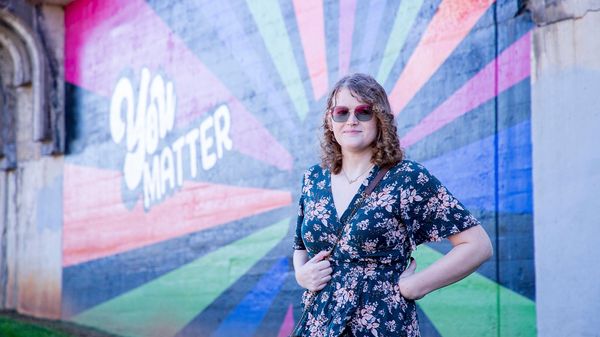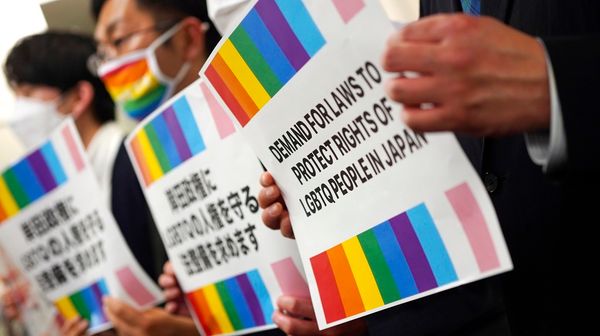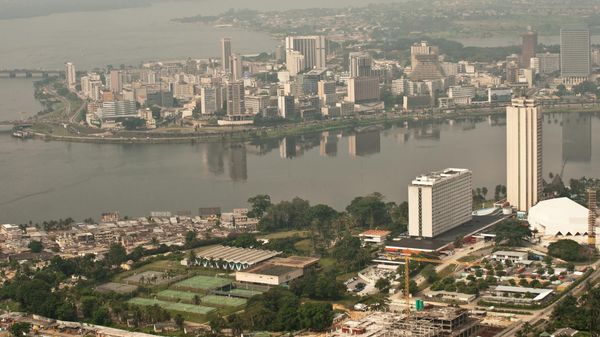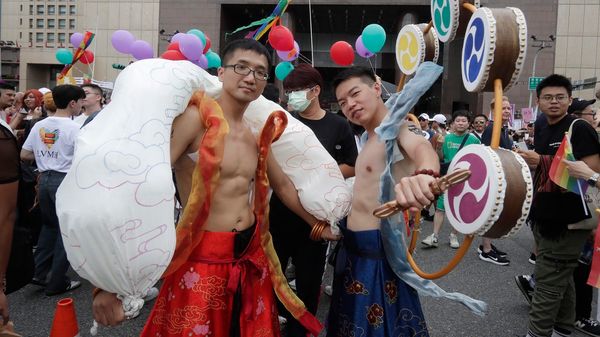
October 28, 2017
SF Releases 5-Year Homeless Plan
Seth Hemmelgarn READ TIME: 7 MIN.
The San Francisco agency tasked with fighting homelessness has released an ambitious five-year plan that lays out goals for helping people living in the city's streets and shelters, including the chronically homeless, youth, and people staying in tents.
But while the Department of Homelessness and Supportive Housing's "strategic framework" report, released in early October, goes into depth about the agency's hopes, it provides little detail about what the efforts will cost or where exactly the money will come from.
The report says that about 7,500 people are homeless in the city "on any given night," and officials have "lacked a coordinated, data-driven, and integrated system to ensure these efforts result in permanent, sustained reductions in homelessness. We also lack the full complement of resources needed to meet the current demand for housing, shelter, and services."
According to the 2017 San Francisco Homeless Point-In-Time Count and Survey, 30 percent of the city's homeless people identify as LGBTQ.
Mayor Ed Lee launched DHSH in 2016, and the agency says its vision "is to make homelessness a rare, brief, and one-time event."
One of the biggest goals listed in the plan is to cut the number of people who are chronically homeless in half by December 2022.
Among other means, the city plans to use existing permanent supportive housing specifically for people in this population - those who are most at-risk for serious health problems and other complications.
"Prioritizing this population ensures that those most in need get quick access to housing," the report says. "Prioritization also saves public resources, since these individuals tend to be high users of public health and other systems."
The city will prioritize over 6,500 existing supportive housing units for chronically homeless people. Another 800 units are being developed and are expected to open in the next five years. The city should be able to get about 3,600 chronically homeless people into permanent supportive housing by the end of 2022, the report says.
Another goal, which deals with the daunting maze of homeless services in the city, is to put into place "coordinated systems for adults, families with children, and youth by December 2018."
As the report notes, "Clients' experience of the current system can elicit confusion and frustration," as they often have to complete multiple program applications and get stuck on different waiting lists, or deal with outreach workers who can discuss what programs may be available, but can't get them into the right services.
"Like a triage nurse in an emergency room," the report says, "Coordinated entry assesses needs and prioritizes available resources, while keeping track of all who seek assistance."
In June, DHSH launched the Online Navigation and Entry System, which merged 15 different homeless services databases into a single data system. The tool, known as the ONE System, is expected to be fully implemented in 2018.
Along with streamlining the system for homeless people, DHSH also wants to implement performance accountability across every program and system by December 2019.
Officials will assess performance based on measures including the number of people who've become homeless for the first time, how many people exit the system by being helped into secure housing, and the number of people who become homeless again.
Another goal is for the city to have a detailed plan to decrease youth homelessness by July 2018. The city's 2017 Homeless Unique Youth Count and Survey shows that almost half of the city's homeless youth say they're LGBTQ.
Work is already underway to provide 50 new supportive housing units for youth, among other steps, and DHSH says it's working on siting a youth-focused Navigation Center. The city's Navigation Centers, which allow people to bring their belongings and pets, work to get people into permanent housing.
Ending encampments
One of the department's most ambitious goals may be to eliminate "large, long-term" tent encampments by July 2019.
Citing San Francisco Public Works, the report says there are almost 100 encampments, and about 25 of them contain "more than five tents or structures."
The Encampment Resolution Team resolved 17 large encampments with about 500 people in its first year of operations, the report says, and DHSH has also been working to educate people about where they can access services.
Additionally, the city plans to improve its overall response to street homelessness by October 2018.
"With over 4,000 people on the street on any given night, it is clear that the existing portfolio of temporary shelter and other services is insufficient," the report says. "Roughly 1,100 individuals are on the nightly shelter waitlist and existing shelters are mostly full. There is currently an expansion of shelters, Navigation Centers and stabilization beds in the works," and the city recently got more than $10 million from state and federal agencies that can be used to expand temporary shelter capacity.
People in San Francisco frequently complain about drug use, mental health, and cleanliness issues in the encampments, and many of these concerns are supposed to be handled by other agencies, the report says. DHSH "is now meeting weekly with partner agencies and holding regular check-in calls throughout the week."
The South of Market neighborhood has seen some of the city's largest encampments.
For weeks, San Bruno Avenue between Division and Alameda streets has been the site of about a dozen tents lining the sidewalks and even the concrete median in the middle of the road.
While many people living in the tents have worked to keep the area clean, garbage spills into the street and pedestrians have often had to navigate between passing traffic and parked cars.
A Bay Area Reporter staffer and others made several calls to the city's 311 customer service center beginning in late August about the encampment.
One operator said that he'd reported the encampment himself, and encouraged a caller to keep reporting it.
After the encampment had been in place for more than a month, an operator said he'd make a note for workers to "escalate" their response.
As of mid-October, the encampment remained.
In an interview, DHSH spokesman Randy Quezada said, "I wish we could do the work faster," but "it takes time to build relationships of trust and get people into a safe place."
Quezada noted that that there used to be even more encampments in the area.
"Every single block was almost impassible," he said.
One man who's lived in the encampment for several weeks is dubious of the city's goal of ending encampments in the next couple of years.
"There's people out here that want to stay out here. That's their way of life," said the man, who said his first name is Allen but declined to share his last name.
Allen, who's 34 and identifies as bisexual, said the Homeless Outreach Teams and Public Works employees are "a joke," and "the city isn't doing shit for people but shuffling them around."
He freely admitted that he'd been evicted from at least one shelter "for fighting." While he doesn't like living in the street, he doesn't want to stay in another shelter.
"Out here, I'm my own boss. I do what I want to do," he said.
Allen said he does want to get into a single-room occupancy hotel, but he's spent two years on a waiting list.
"You're waiting, you're waiting," he said. "... It's hurry up and wait for everything."
Money
While DHSH's five-year plan offers many details on how the agency will address homelessness, it doesn't say much about how much money it will take.
The report says that the city's budgeted about $239 million in operating funds for the agency in the current fiscal year to address homelessness, which is about 2.4 percent of San Francisco's $10 billion budget.
Asked about how much money achieving the goals in the five-year plan would cost, and where that money would come from, Quezada said, "This document's more of a road map. It's not the financial plan."
He didn't have information on when budget details would be available.
"The budget process unfolds the way it does," said Quezada. "Right now, we're really focused on getting the vision out, getting the roadmap out," with the idea of better serving homeless people, providers, and the city overall.
The report does say that the Tipping Point Community organization has pledged $100 million to help the city reach its goal of cutting chronic homelessness by 50 percent by 2022. The money will be used "to attack the root causes of homelessness, boost the capacity of the public sector, and work with the city and other partners to support the addition of new, stable housing for thousands of people."
Jennifer Friedenbach, executive director of the Coalition on Homelessness, said in an interview early in October that she hadn't yet read the entire DHSH report, but she was concerned by the lack of financial detail.
Tipping Point's help isn't going to be enough, said Friedenbach.
"What the plan really should be calling for is a serious investment in homelessness in order to reach its stated goals from the city," she said. "The resources are not outlined in the strategic plan."
Friedenbach said with the Navigation Centers and other efforts, "We're making progress, but the numbers are so overwhelming, it's going to take a lot more than the status quo."
The small percentage of the city budget that's going to fight homelessness means that it's "a very low priority, and that needs to shift," she said.
The five-year plan is available at http://hsh.sfgov.org/wp-content/uploads/2017/10/HSH-Strategic-Framework-Full.pdf .
Legislators call for end to youth homelessness
Gay state Senator Scott Wiener and (D-San Francisco) and Assemblywoman Blanca Rubio (D-Baldwin Park) recently held a hearing on youth homelessness in California at the Los Angeles LGBT Center.
They announced they'll introduce and pass a bill next year "to devote significantly more resources to youth homelessness, create much more coordination in allocating those resources, and implement best practices - proven methods of housing youth," according to a news release from Wiener's office.
At the hearing, Sherilyn Adams, executive director of San Francisco's Larkin Street Youth Services, said needs include $60 million to provide housing options to homeless youth, according to the news release.







